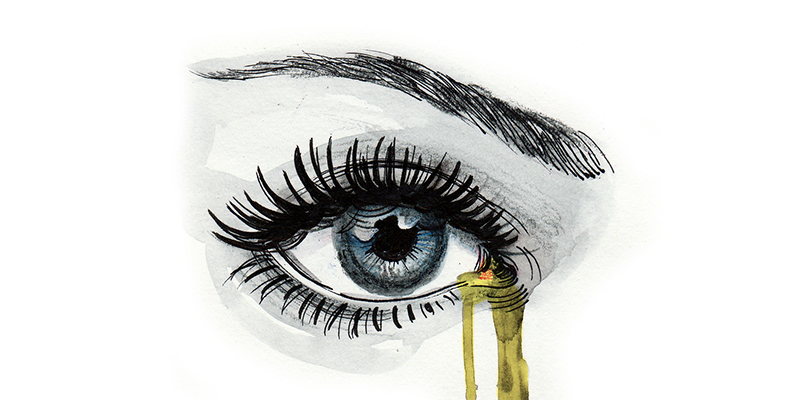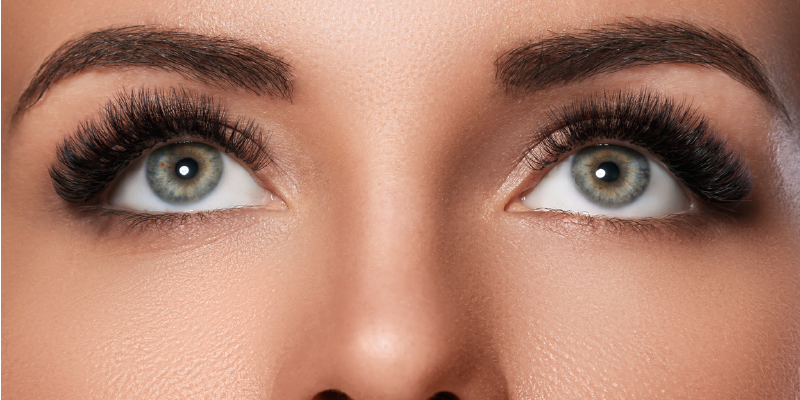What are tears? At first, it might seem like an easy enough question to answer, but upon further thought, describing what tears are, what they are made of, and why our eyes need them can be a little more difficult. We all know that tears are the watery substances that come out of our eyes when we’re sad or even very happy, but what about other types of tears—the ones that don’t have anything to do with our emotions? Here, we provide an overview of what tears are, why they are so important to your eye health, and what happens when your eyes don’t produce sufficient tears.
What’s in a Tear?

There are actually three types of human tears: basal tears, reflex tears, and emotional tears. We’ll be discussing basal tears primarily because these are the ones that are always present in your eyes, even if you don’t realize it. Reflex tears help to flush away irritants from your eyes, such as dust or smoke. Emotional tears are the ones that happen when we cry.
Basal tears, which are produced in the lacrimal glands, are made up of a mixture of water, lipids, proteins, electrolytes, mucin, and other important components [1]. Every time you blink, these tears spread over your eyes, coating them in these important nutrients while also providing lubrication and protection from external irritants.
The Importance of Healthy Tears for Your Eye Health

When enough high-quality tears are being produced and secreted by your lacrimal glands, your eyes are able to stay properly hydrated and protected from possible irritants and other harmful substances. For some people, however, their lacrimal glands are not able to produce adequate tears in order to perform these functions. This is the leading cause of aqueous tear deficient dry eye syndrome, which can cause eye soreness and redness, and vision problems [2].
Another type of dry eye syndrome called evaporative dry eye happens when the meibomian glands become blocked. The meibomian glands are responsible for secreting an oil film that helps to keep the eyes lubricated. When these glands become blocked, it can allow tears to quickly evaporate from the surface of the eye, resulting in similar symptoms to aqueous tear-deficient dry eye syndrome [3].
Solutions to Dry Eye

There are a number of ways that you can treat and better manage both types of dry eye syndrome. If your lacrimal glands are not producing enough tears to begin with, you can try using liquid teardrops to supplement the missing tears. Be sure to talk to your eye doctor first, however, to make sure you’re using the right type of eye drops for your specific eye condition.
Another excellent option in addition to using eye drops is to make sure you’re properly cleaning your eyelids at least once each day to help sweep away irritating particles, bacteria, and even an overabundance of eyelash mites that could be contributing to clogged glands and your dry eye symptoms. Even for those without noticeable symptoms of dry eye syndrome or other related conditions, practicing good eyelid hygiene is a must for optimal eye health.
Some eye experts also recommend trying essential fatty acid supplements to help increase the amount of lipids within your body, including your eyes. Fish oil or flaxseed oil supplements are two of the most common dietary supplements for this purpose.
In Summary
Tears are an essential part of proper eye function and health. If you’re not producing enough of your own, talk to your eye specialist for treatment recommendations, which typically start with an effective eyelid cleansing routine. Then, depending on the type and cause of dry eye that you are experiencing, he or she may also suggest additional options for better managing the condition so that you can get back to enjoying life with clear, comfortable eyes.
[1] Understanding Sjögren – Sjögren’s Syndrome Foundation
[2] Zoukhri, D. (2006). Effect of inflammation on lacrimal gland function. Experimental eye research, 82(5), 885-898.
[3] Distinguishing Evaporative from Aqueous Deficient Dry Eye – Cataract & Refractive Surgery Today Europe




